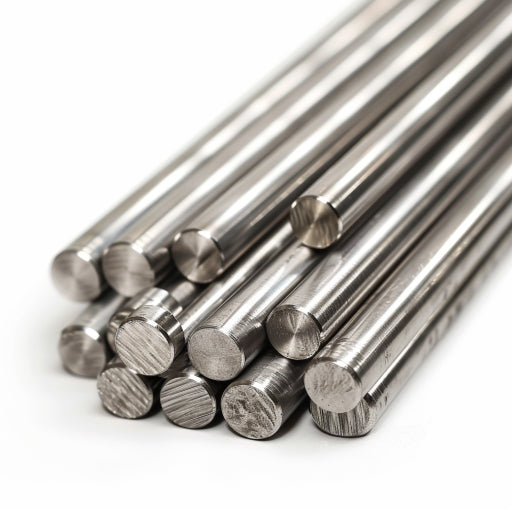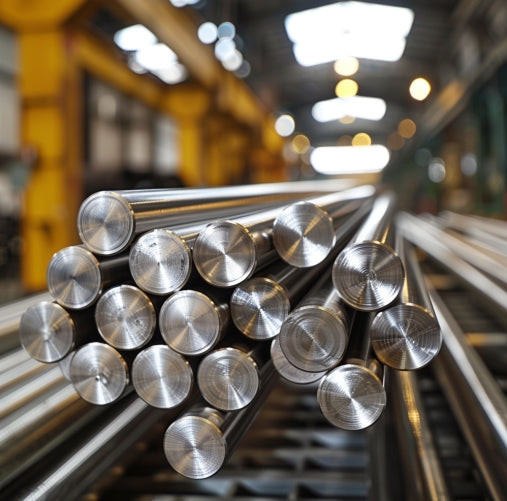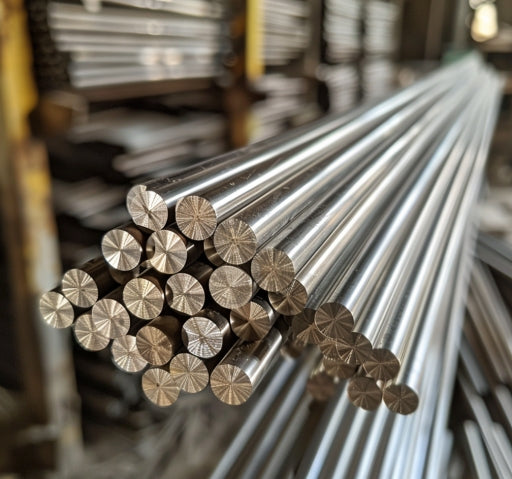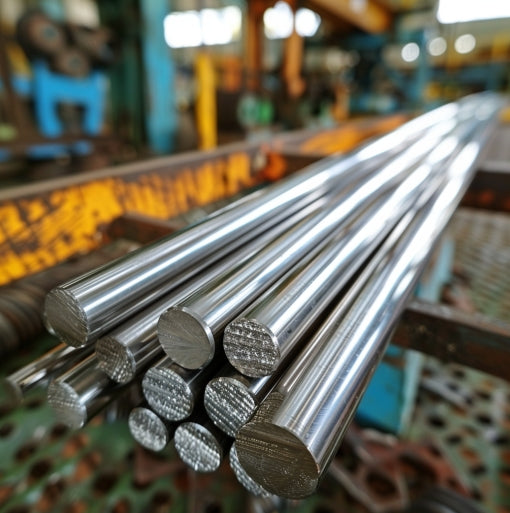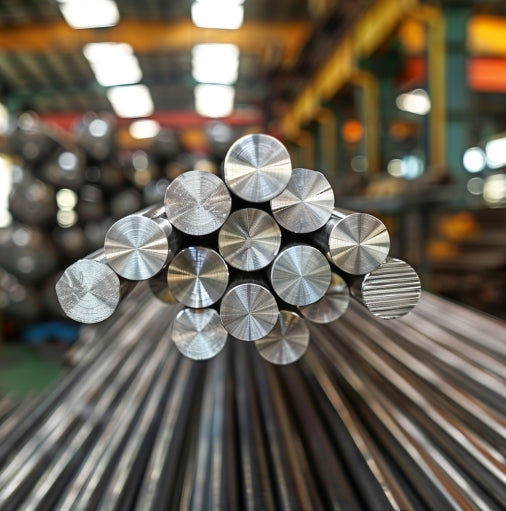StockSteel
Stainless Steel Rod/Bar Supplier | Custom Sizes & Grades
Stainless Steel Rod/Bar Supplier | Custom Sizes & Grades
Couldn't load pickup availability
Stainless Steel Round Rod/Bar Product Details Page
Specifications
| Parameter | Details |
|---|---|
| Material Grades | 304, 316, 316L, 410, 420, 430, 17-4PH, 2205 (Duplex), 904L |
| Diameter Range | 3–500 mm (Cold Drawn: 3–60mm; Hot Rolled: 10–300mm; Forged: 120–500mm) |
| Length | Standard 6m; Customizable (1–12m) |
| Surface Finish | Annealed, Pickled, Polished, Bright, Black, Sandblasted |
| Hardness (HV) | Austenitic: 150–200 |
| Tolerance | ±0.1mm (Cold Drawn), ±0.5mm (Hot Rolled) |
| Density | 7.9 g/cm³ |
Mechanical Properties
Tensile Strength
stainless steel round rod bar exhibits exceptional tensile strength, ranging from 515–827 MPa depending on the grade and processing method. For example:
- Austenitic grades (304/316): 515–620 MPa
- Martensitic grades (410/420): 760–827 MPa
- Duplex grades (2205): 620–750 MPa
Hot-rolled bars generally provide higher strength due to work hardening, while cold-drawn bars offer tighter tolerances.
Bending Strength
Bending strength correlates with yield strength and ductility. Austenitic grades (e.g., 304) have a yield strength of 205–310 MPa, enabling excellent formability. china stainless steel rod bar products undergo rigorous testing to ensure compliance with ASTM A484/A479 standards. For precision applications, cold-drawn bars reduce deflection risks due to their uniform grain structure.
Identification & Marking
Stainless steel bars are marked using laser engraving or color codes per international standards:
- ASTM/ASME: Grade designation (e.g., “316L”), heat number, and manufacturer’s logo.
- ISO/DIN: Material numbers (e.g., 1.4404 for 316L) and dimensional tolerances.
Certifications include Mill Test Reports (MTRs) with chemical composition and mechanical data.
Weight Calculation
Weight (kg/m) = (π × (Diameter/2)² × Density) / 1000
Example: A 20mm diameter stainless steel bare welding filler rod weighs:
(3.14 × (20/2)² × 7.9) / 1000 = 2.492 kg/m.
Why Does Stainless Steel Rust?
While stainless steel round rod bar is corrosion-resistant, rust can occur under specific conditions:
- Chloride Exposure: Chlorides (e.g., seawater) disrupt the passive chromium oxide layer, leading to pitting.
- Mechanical Damage: Scratches or abrasions expose raw steel to oxidation.
- Low Chromium Content: Grades with <10.5% chromium lack sufficient corrosion resistance.
- Galvanic Corrosion: Contact with dissimilar metals in electrolytes accelerates rusting.
Regular cleaning with mild detergents and avoiding abrasive tools mitigate these risks.
Why Choose Our Stainless Steel Bars?
- Material Diversity: Over 20 grades, including super duplex and precipitation-hardening steels.
- Precision Manufacturing: CNC-controlled cold drawing and hot rolling ensure ±0.1mm tolerance.
- Global Certifications: ASTM, DIN, ISO, and PED compliance for industrial and cleanroom use.
- Custom Solutions: Tailored surface finishes, lengths, and packaging (wooden crates/bundles).
- Quality Assurance: Third-party lab testing for hardness, corrosion resistance, and tensile strength.
